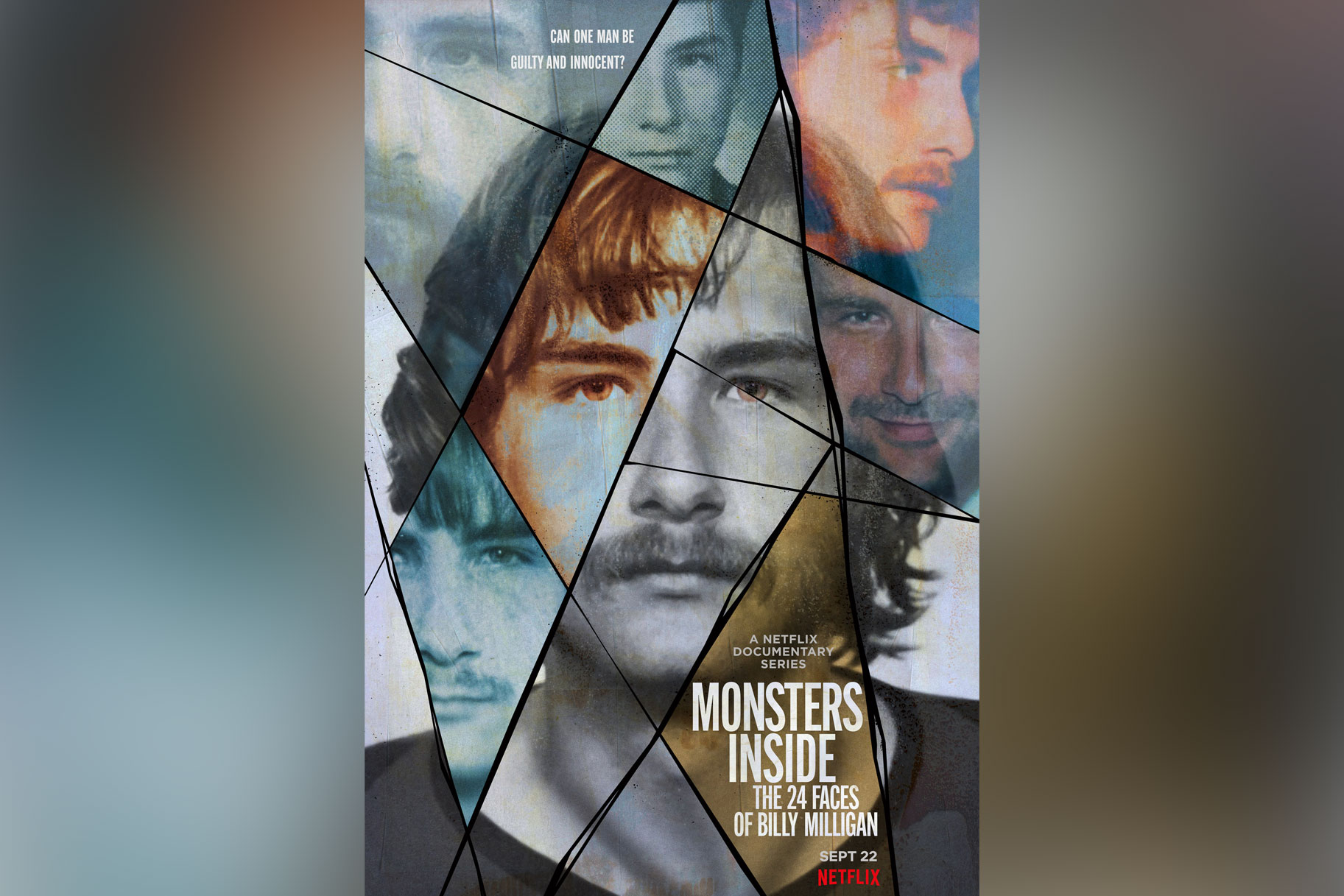Create a free profile to get unlimited access to exclusive videos, breaking news, sweepstakes, and more!
Can Someone Really Have 24 Personalities Like Billy Milligan From 'Monsters Inside'?
Billy Milligan's psychiatrists say he had about 24 distinct personalities. Is that possible?

People were divided on whether or not serial rapist Billy Milligan really had more than two dozen personalities.
Was one of his alter personalities really in charge when he raped multiple women or was he just a brilliant and conniving sociopath who made it all up? Can a person really have multiple personalities, let alone 24?
Netflix’s docuseries “Monsters Inside: The 24 Faces of Billy Milligan,” which hits the streaming service on Sept. 22, explores these questions while looking back at Milligan’s case.
Milligan raped three Ohio State University students in 1977 before psychiatrists diagnosed him with multiple personality disorder — known as dissociative identity disorder since 1994. Experts ultimately decided that as many as 24 distinct “multiples” existed within Milligan’s mind.
He became the first person in American history to successfully use multiple-personality disorder as a defense for violence at trial. A jury believed the story enough to find him not guilty by insanity.
While his lawyers were the first to effectively use multiple personalities in American court, the idea was not new. Just a few years earlier, the 1973 book “Sybil” became a subject of fascination. The story claimed to be based upon the true life story of Shirley Mason, a woman with 16 personalities. Following the book’s publication reported cases of multiple personality disorder skyrocketed from fewer than 100 to thousands, National Public Radio reported in 2011.
While people were fascinated by the book and a subsequent 1976 miniseries, Mason later admitted to faking the personalities for attention.
Other theories about multiple personalities have been controversial and even been the subject of ridicule. Some psychiatrists, like Dr. Dorothy Lewis, have been accused of inviting criminals to fake the illness as a legal defense.
Is dissociative identity disorder, or DID, real or was it, as National Public Radio described it, merely a “psychiatric phenomenon”?
A 2016 study by the Harvard Review of Psychiatry claims that the disorder is indeed real and not a “fad.”
“DID cases have been described in the literature for hundreds of years,” the study states. “Since the 1980 publication of DSM-III, DID has been described, accepted, and included in four different editions of the DSM. Formal recognition as a disorder for over three decades contradicts the notion of DID as a fad.”
It goes on to address another myth – that patients are being overdiagnosed with the disorder.
“Studies show, however, that most individuals who meet criteria for DID have been treated in the mental health system for 6–12 years before they are correctly diagnosed with DID,” the study states.
It adds that “patients are consistently identified in outpatient, inpatient, and community samples around the world.”
Still, the diagnosis appears to be relatively rare. It is diagnosed in about 1.5% of the global population.
As for the number of personalities, it appears that it is possible to have dozens of them.
“A person living with DID may have as few as two alters or as many as 100,” the National Alliance on Mental Illness, or NAMI, states. “The average number is about 10.”
The alliance notes that people with DID typically have episodes of amnesia and time loss, a claim that Milligan made in court.
“These individuals may be unable to remember events in all or part of a proceeding time period,” NAMI states. “They may repeatedly encounter unfamiliar people who claim to know them, find themselves somewhere without knowing how they got there or find items that they don’t remember purchasing among their possessions.”
They note that typically, most people who have DID are unaware of the disorder until they are diagnosed by a psychiatrist.
Psychiatrists linked Milligan’s disorder to his violent and traumatic childhood. Dissociative identity disorder is usually associated with extreme childhood trauma.
The Harvard study notes that “DID patients usually benefit from psychotherapy that addresses trauma and dissociation in accordance with expert consensus guidelines.”














